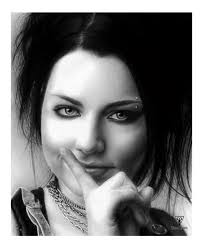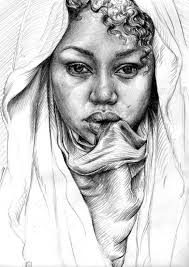Source:Google.com.pk
Charcoal Pencil Drawings Biography
Edward Estlin Cummings was born October 14, 1894 in the town of Cambridge Massachusetts. His father, and most constant source of awe, Edward Cummings, was a professor of Sociology and Political Science at Harvard University. In 1900, Edward left Harvard to become the ordained minister of the South Congregational Church, in Boston. As a child, E.E. attended Cambridge public schools and lived during the summer with his family in their summer home in Silver Lake, New Hampshire. (Kennedy 8-9) E.E. loved his childhood in Cambridge so much that he was inspired to write disputably his most famous poem, "In Just-" (Lane pp. 26-27)








Charcoal Pencil Drawings Biography
Edward Estlin Cummings was born October 14, 1894 in the town of Cambridge Massachusetts. His father, and most constant source of awe, Edward Cummings, was a professor of Sociology and Political Science at Harvard University. In 1900, Edward left Harvard to become the ordained minister of the South Congregational Church, in Boston. As a child, E.E. attended Cambridge public schools and lived during the summer with his family in their summer home in Silver Lake, New Hampshire. (Kennedy 8-9) E.E. loved his childhood in Cambridge so much that he was inspired to write disputably his most famous poem, "In Just-" (Lane pp. 26-27)
Not so much in, "In Just-" but Cummings took his father's pastoral background and used it to preach in many of his other poems. In "you shall above all things be glad and young," Cummings preaches to the reader in verse telling them to love with naivete and innocence, rather than listen to the world and depend on their mind.
Attending Harvard, Cummings studied Greek and other languages (p. 62). In college, Cummings was introduced to the writing and artistry of Ezra Pound, who was a large influence on E.E. and many other artists in his time (pp. 105-107). After graduation, Cummings volunteered for the Norton-Haries Ambulance Corps. En-route to France, Cummings met another recruit, William Slater Brown. The two became close friends, and as Brown was arrested for writing incriminating letters home, Cummings refused to separate from his friend and the two were sent to the La Ferte Mace concentration camp. The two friends were finally freed, only due to the persuasion of Cummings' father.
This experience proved quite instrumental to Cummings writing; The Enormous Room is Cummings' autobiographical account of his time in the internment camp. E.E. was extremely cautious to attempt to publish The Enormous Room, however after great persuasion by his father, Cummings finally had a copy of the manuscript sent to Boston to be read. (Kennedy p. 213) Cummings greatest fan, Edward wrote after reading his son's manuscript, "I am sure now that you [E.E] are a great writer, and as proud of it now, as I shall be when the world finds out." (p. 213)
Cummings and Brown returned back to the states in January only to see Cummings drafted back to the war that summer. When Cummings returned after the armistice, he moved back in with Brown and soon met his first wife, Elaine Orr (p. 165). In 1920, Cummings began to concentrate on his writing and painting. For the next six years, Cummings wrote many pieces of work, Tulips and Chimneys (1923), & (1925), XLI Poems (1925), and Is 5 (1926). Also during that time, Cummings and Elaine's marriage ended in a rather complicated divorce. Cummings had no concept of how to treat his new wife correctly, so she found herself love in the arms of another man (p. 264).
In the same year that Is 5 was published, Cummings' father was abruptly killed and his mother was injured seriously in a car accident. With his new love-interest, Anne Barton, Cummings found out of his father's death at a small party in New York. Cummings and his sister, Elizabeth, immediately rushed to their mother's bedside. Although she was not expected to live through the week, Rebecca was inspired by her children to continue living and she miraculously survived a fractured skull. E.E. explained the catastrophe in these words,
"... a locomotive cut the car in half, killing my father instantly. When two brakemen jumped from the halted train, they saw a woman standing- dazed but erect- beside a mangled machine; with blood spouting (as the older said to me) out of her head. One of her hands (the younger added) kept feeling her dress, as if trying to discover why it was wet. These men took my sixty-six year old mother by the arms and tried to lead her toward a nearby farmhouse; but she threw them off, strode straight to my father's body, and directed a group of scared spectators to cover him. When this had been done (and only then) she let them lead her away." (Kennedy 293)
Cummings' father was an incredible influence on his work. At his death, Cummings' entered "a new poetic period." (p. 386) His father's death sobered E.E. to write about more important facets of life. Cummings began his new era of poetry by paying tribute to his father's memory in his poem, "my father moved through dooms of love" (Lane p. 41ñ43). This poem, used to cope with the death of his role model, was not a somber funeral drone, but rather, a celebration of the life and love that his father brought to Cummings' life and poetry. While making notes about his father, Cummings wrote, "He was the handsomest man I ever saw. Big was my father and strong with lightblue skies for eyes." (Kennedy p. 385)
From his father's death to 1932, Cummings survived a poor showing of his play Him (1927), and published two other works of his artistic talents in CIOPW (1931), and ViVa (1931). Cummings also successfully married and divorced Anne Barton in the five years after the accident that took his father away from him (p. 296). 1932 is an important year for Cummings because it is the year that he met the woman that he would ultimately spent his remaining life with. Marion Morehouse was twelve years younger than E.E. It is uncertain whether E.E. and Marion ever officially exchanged vows, although their role in each other's lives was certainly that of husband and wife (p. 338-340).
Charcoal Pencil Drawings
Charcoal Pencil Drawings
Charcoal Pencil Drawings
Charcoal Pencil Drawings
Charcoal Pencil Drawings
Charcoal Pencil Drawings
Charcoal Pencil Drawings
Charcoal Pencil Drawings
Charcoal Pencil Drawings
Charcoal Drawing Basics
Charcoal Speed Drawing
No comments:
Post a Comment